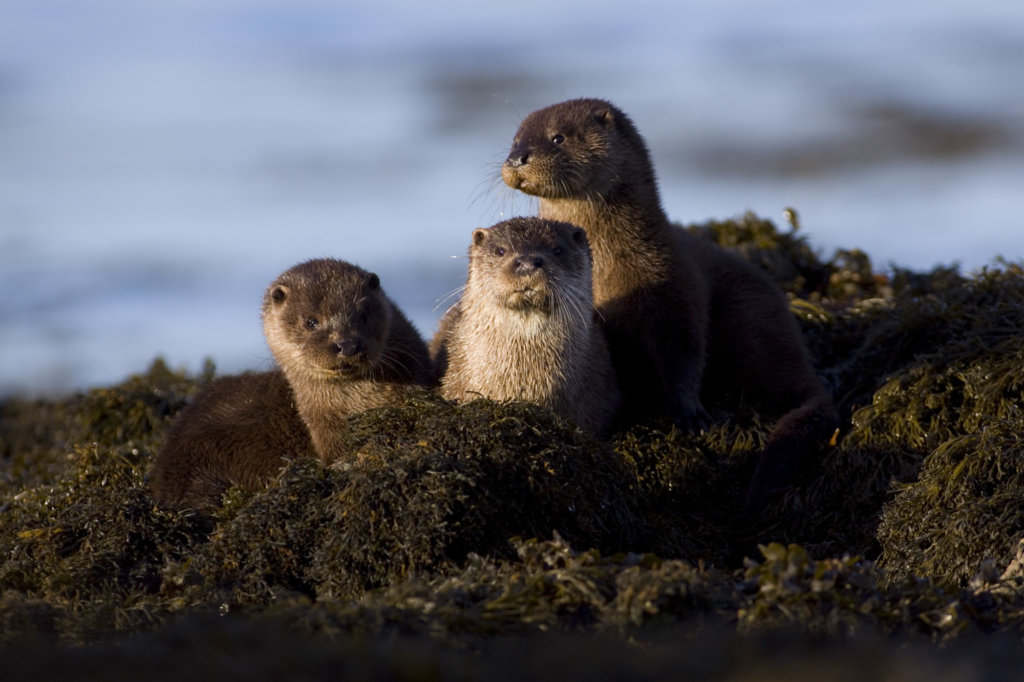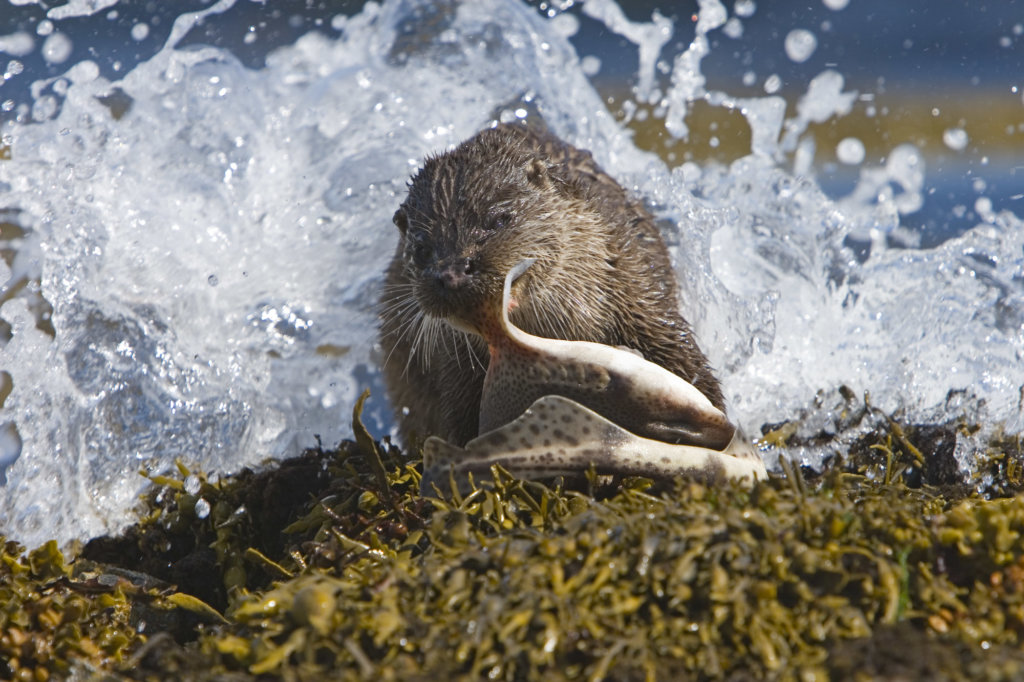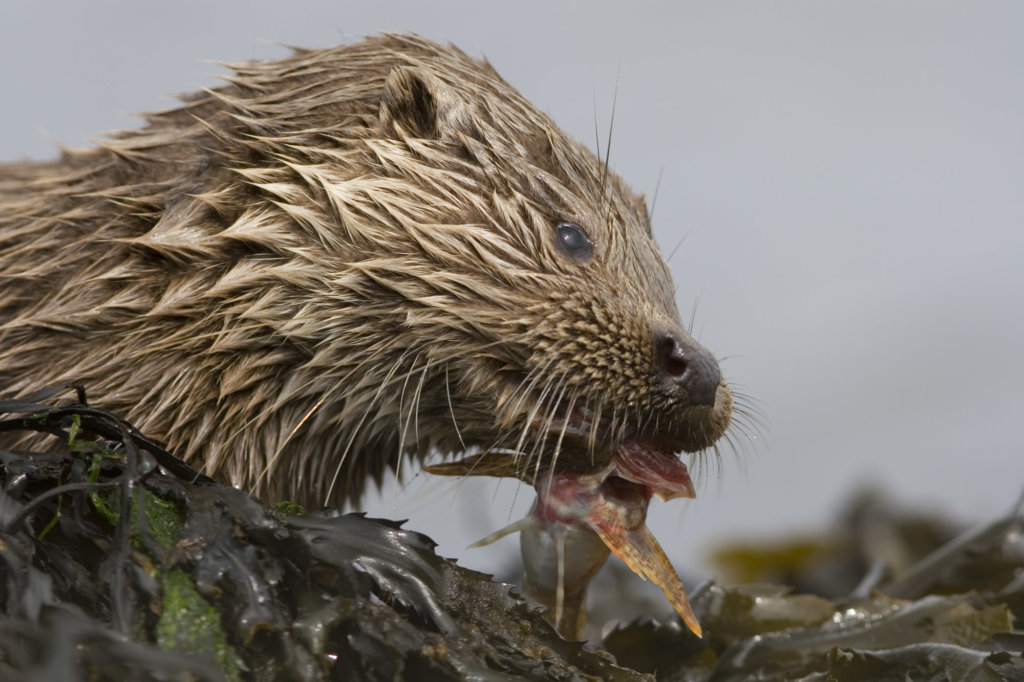Our guide for where, when and how to spot the elusive Eurasian Otter on Mull.
What is a Mull Otter?
They find their prey mostly in the sea, but they are not sea otters, a different species found on the Pacific coast. The Mull otter is the Eurasian otter, Lutra lutra, a member of the Mustelid family which also includes Badgers, Mink and Pine Marten. The Eurasian Otter is the only species of otter in the UK, occupying sea, rivers and lakes across the country. An adult otter will be about 1-1.2 metres long from tip of the nose to end of the tail.

Where?
The good news is: just about everywhere! Just about every mile of Mull’s coastline could be home to otters.
Look for them where you see seaweed and rocks, as this is where they tend to find their prey. They can sometimes be spotted on the rocks, feeding or grooming, or in amongst the seaweed on the shoreline, resting.
Their seaweed-coloured coats camouflage them, so it is possible to walk past a snoozing otter even when it is only a short distance away.

When?
More good news: an otter could be seen at any time of day. Otters fish throughout the day and night. Some say that you have a better chance of spotting them a few hours either side of low tide when they are active. At high tide, they are more likely to be resting.
When the sea is calm, it may be easier to spot an otter swimming on the surface while fishing. However wild the weather, otters must try to look for food, so it is worth keeping an eye out on rough days, too.

How?
When you are out and about along the coast, on foot or in a car, keep a look out for movement in the water. Otters tend to be seen close to shore. It is easy to be confused by a glimpse of a bird diving, or a seal. You will know it is an otter if it remains active, diving for an average of 20 seconds, only pausing to eat its food. A diving otter typically shows the curve of its back then a flick of its tail.

Remember to respect the otters and other wildlife. And show consideration for road users and other otter watchers.
If you are driving on Mull, you have an excellent wildlife viewing hide. The driver will be watching the road, but passengers can do the otter spotting. You will be driving slowly, so remember to pull in to the nearest passing place when there is a vehicle behind or is approaching you.
When parking your car, make sure that you don’t block passing places, gates, or driveways. If you are getting out of the vehicle do not slam doors or make any noise – you will scare the otter away.
When you spot an otter, stay quiet and still. You will disturb the otter if you try to get too close. Otters have excellent senses of sight, sound, and smell. If they detect you, they will quickly disappear. It helps to wear dull clothing and stay low, so your silhouette is not seen from the otter’s point of view. Stay downwind of the otter to prevent it from noticing your smell. When you need to move, wait until the otter dives for food.
It’s a good idea to stay in one place. Let the otter come to you. It may not notice you and could approach by itself!
Report Your Sightings
Please report your otter sightings here.
In time, research will provide valuable information on Mull’s otter population. The raw data remains confidential to protect the data of reporters and to safeguard the locations of otters.
For more information, please visit the Mull Otter Group.